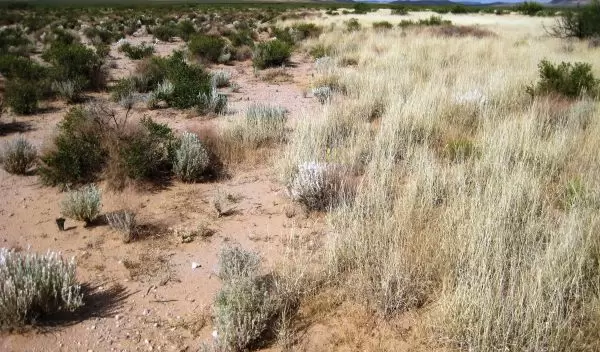
Drylands: Desolate, scorched, uninhabitable? Scientists say otherwise
Find related stories on NSF's Long-Term Ecological Research Program at this link.
Drylands evoke images of desolate, scorched, uninhabitable deserts.
But arid and semi-arid lands are complex ecosystems made up of grasses, shrubs, agricultural fields and urban-dwelling plants and animals, including us.
Globally, drylands are becoming mosaics that need fresh perspectives and explanations for ecosystem processes--views that go beyond traditional paradigms of grassland-to-shrubland conversion, researchers say.
Desertification: new views
Scientists detail findings on new paradigms for dryland ecology and management in the February 2015 issue of the journal Frontiers in Ecology and the Environment, published by the Ecological Society of America.
The issue was organized by ecologist Debra Peters, principal investigator of the Jornada Basin Long-Term Ecological Research (LTER) site funded by the National Science Foundation (NSF) and based at the Jornada Experimental Range in Las Cruces, New Mexico.
"Historically, drylands have been studied through the lens of desertification--the transition from perennial grasslands to landscapes dominated by bare ground or woody plants that are easily eroded and unpalatable to domestic livestock," says Peters.
However, recent studies show that transitions can occur across a range of environmental conditions and socioeconomic contexts.
These journal papers, says Peters, illustrate how long-term data from Jornada Basin is being used to generate new paradigms for understanding, managing and predicting dryland dynamics across diverse landscapes.
Threats to economic stability, global societies
"Increasing 'desertification' threatens economic stability and societies globally," says Saran Twombly, NSF LTER program director.
"This series of papers reveals desertification as a complex transition that cannot be completely understood or predicted without attention to 'legacy' [historical] effects.
"Historical events leave enduring environmental footprints. They underscore the need for investment in long-term ecological research, which allows events documented decades ago to lead to new paradigms for the future."
The articles were authored by U.S. Department of Agriculture Agricultural Research Service (ARS) scientists at Jornada Basin, including Peters and Kris Havstad, along with colleagues at New Mexico State University, Arizona State University, the University of Arizona, the U.S. Geological Survey, University of California at Los Angeles, and the Asombro Institute for Science Education.
New perspectives on drylands based on historical 'legacies'
The authors broaden the traditional framework for studying drylands based on desertification to offer a comprehensive and improved approach for understanding, managing and predicting complex drylands.
They provide new perspectives on how water and wind move material across drylands in the context of historical environmental conditions, current climate extremes and changing patterns of land use.
Many dryland landscapes have gone through marked changes in vegetation structure and ecosystem processes over the past 150 years, says Peters.
Explanations for these changes include overgrazing by livestock, drought and climate change, fewer fires, changes in atmospheric chemistry and fluctuations in small animal populations, such as rabbits.
Peters and co-authors argue that we need to look at these factors synergistically rather than individually and bring in the role of people, especially as human populations increase.
The new framework, Peters says, can be used to assess dryland ecosystem services, inform land-management decisions, and improve the ecological literacy of future generations living on and co-existing with drylands.


